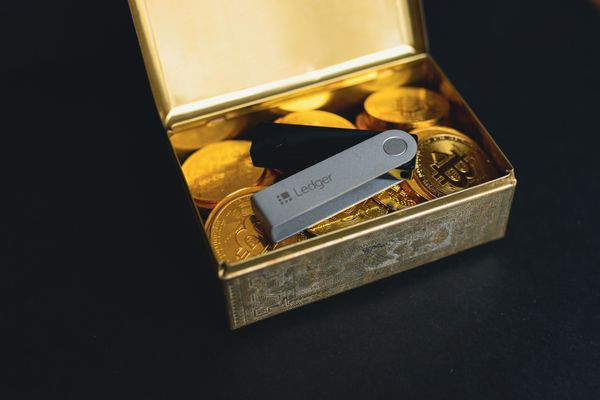Digital Decluttering, Episode 2. Take back control of your social media feeds

Social media platforms bombard us with a never-ending stream of posts, updates, and content from friends, followers, brands, ads, and even strangers. While connectivity is valuable, it can also be overwhelming and distracting sometimes.
That's why doing a little social media decluttering can be a game-changer. This process cultivates greater focus and intention in how you spend your online time. Instead of mindlessly scrolling through endless trivial posts, you engage more meaningfully with people and topics that matter to you. You refocus your time and energy on the content that genuinely enriches your life.
Decluttering also enhances the safety and privacy of your social media accounts by limiting who can see your personal information and updates and eliminating potential scammers and fraudsters who follow you.
So here's how to do a "digital deep clean" of your social media accounts, take control of your feed, and simplify your online life.
How to cut the noise on social media in 5 steps
A social media decluttering session means reviewing your accounts, keeping what interests you, and unfollowing or unfriending the rest. Our tastes, interests, and relationships change over time, and it's absolutely normal for our online presence and feed to reflect that.
Step 1: Unfollow pages, celebrities, groups, and tags you no longer want to see
One of the main reasons why your social media feed can become overwhelming and chaotic is because of all the pages, groups, and hashtags you have followed with just a few taps in the past. Initially, it was a convenient way to stay updated on things that interested you, but now it has become a constant stream of content, burying the stuff you actually care about.
It's time for an unfollow campaign. Take a look at your list of liked pages and joined groups and evaluate them critically. If you can't remember the last time you viewed posts from a particular page or actively participated in a group, leave or unlike it. If you no longer resonate with the lifestyle, habits, products, celebrities, or publications you see, click the Unfollow button.
The goal is to declutter your feed to display more of what your friends or favorites share.
Step 2: Cleanup for Spam/Inactive Accounts and people you don't know
Fake profiles, spammers, and scammers can easily infiltrate your accounts, putting your privacy and data at risk. During this decluttering phase, you'll want to properly rid your virtual space of any sketchy or unknown figures.
Comb through your followers and immediately unfollow (or block) any accounts that seem spammy, impersonal, nefarious, or don't recognize at all. Maybe it's an account with a strange username made up of random numbers/letters and no profile picture. Or one that claims to provide "get rich quick" schemes or adult content. If something seems fishy, it's better to be safe than sorry - unfollow and block them.
If you are unsure about the authenticity of something you find on the internet, you can verify it with Scamio.
The same goes for those random company/organization accounts you followed ages ago that have been inactive for years now. Clear out the clutter. Your socials should be an intimate, trusted space.
Step 3. Keep your friends close and unfriend the rest
This step is about being honest with yourself about your relationships.
Over time, our social media connections become a mixed bag. There are true friends, but then there are also other people who have naturally drifted apart as relationships evolved. Friends of friends from that summer holiday 15 years ago. Former coworkers from old jobs. Neighbors and acquaintances from past phases of life that you don't really know anymore.
If someone's posts and life milestones still resonate with you and feel relevant, by all means, keep them around. But for anyone you've grown apart from to the point where they're practically strangers now, it's okay to unfriend/unfollow them.
The same evaluation applies to anyone whose posts conflict with your values, offend you or others, are too frequent, or make you upset or angry.
Your social media sphere should be an uplifting, empowering space - not a landing pad for negativity and bad vibes.
Step 4: Reduce your digital footprint by deleting your own content
As you work towards decluttering your online life, remember your digital footprint. All the photos, videos, comments, and posts you've shared on social media sites can create a trail of personal data that can put your privacy and security at risk.
Scammers and hackers can use even small pieces of information to harm you. A private photo or personal anecdote shared years ago could be the missing puzzle piece for fraudsters to piece together enough data to cause real damage. They can craft phishing schemes and financial and identity theft attempts by using details like your birthdate, hometown, interests, relationships, and more. With data breaches happening all the time, your personal information may be exposed and sold on the Dark Web.
Go through your archives and delete any overly personal posts, comments, media, and shares you no longer need public.
If you want to know the extent of your digital presence, Bitdefender Digital Protection is a helpful tool. It allows you to view what information about you is available on the internet and provides suggestions on how to minimize this in the future. Additionally, it sends you immediate notifications if your information has been compromised in a breach, along with instructions on how to safeguard yourself.
Step 5: Review notifications and lock down privacy settings
Now that you've decluttered your feeds and purged outdated content, it's time for the final security sweep - reviewing and optimizing your notification and privacy settings. Since you're already doing a deep clean on your social media accounts, this is the perfect opportunity to enhance your privacy and safety and:
- Change your passwords for new, strong ones if you haven't done it in a while, or use a password manager.
- Turn on two-factor authentication (2FA) wherever possible for that extra layer of protection.
- Set the strictest visibility settings for posts, stories, locations, tagged photos/videos, etc. Unless you have a professional public-facing account, there's no need for oversharing with the world.
- Revoke any shady third-party app accounts you accidentally granted access to during a Sign-Up-With-Facebook binge or a funny quiz. They could still be snooping on your data.
- Shut off that location-sharing for privacy. For more practical and detailed advice on advice on optimizing privacy settings for popular apps, consider getting Bitdefender Digital Identity Protection.
Now, look at the various alerts and updates continuously pinging your devices. Identify and mute any channels, whether comments, likes, pokes, or other interactions, that induce undue anxiety or distract you.
Last but not least, if you haven't already, be sure to also check out our guide on dealing with an overstuffed inbox - yet another arena where a bit of productive decluttering can work wonders for your wellbeing and productivity.
tags
Author
Cristina is a freelance writer and a mother of two living in Denmark. Her 15 years experience in communication includes developing content for tv, online, mobile apps, and a chatbot.
View all postsRight now Top posts
Start Cyber Resilience and Don’t Be an April Fool This Spring and Beyond
April 01, 2024
Spam trends of the week: Cybercrooks phish for QuickBooks, American Express and banking accounts
November 28, 2023
FOLLOW US ON SOCIAL MEDIA
You might also like
Bookmarks








